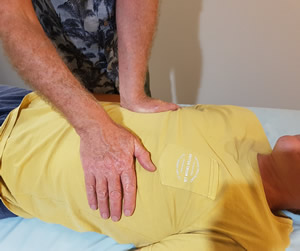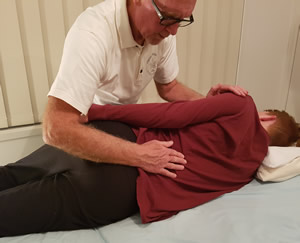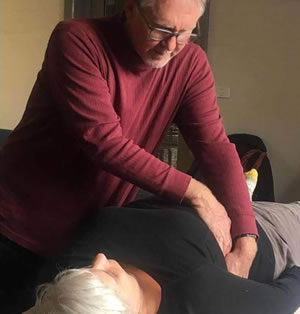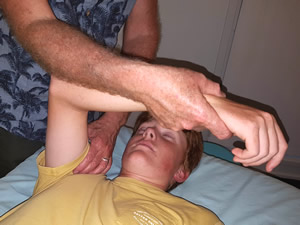Basics Phase 4
This foundation class covers the history, philosophy and concepts of Ortho-Bionomy and provides an overview of the basic release techniques for each major joint in the body. Movements and positions of comfort are demonstrated to facilitate the release of muscular tension and overall stress by stimulating the inherent, self-corrective reflexes of the body which help the body create structural alignment and balance from within.

Demonstration Skills
In this class participants learn how to describe and present Ortho-Bionomy to family, friends and the public in general. Participants are encouraged to find ways to communicate the “unexplainable” and practice presenting Ortho-Bionomy in a clear and accurate way. Techniques for building confidence and for improving public speaking and presentation are included.
Prerequisite: Phase Four
Exploration of Movement Patterns
Exploration of Movement Patterns adds a dynamic dimension to the positional release techniques. Participants will learn to recognize and palpate patterns of joint and muscle movement in order to facilitate an increased range of motion to promote a general sense of well-being in the body. By gently exploring and supporting preferred patterns of movement or stillness, the client is invited to actively participate and recognize their patterns. Functional anatomy will also be discussed.

Practitioner Training Seminar
This seminar addresses issues and questions that arise for individuals completing the Practitioner Training Programs and helps participants synthesize their entire training experience. The class format includes time to discuss questions or problems that arise during a session, an opportunity to receive feedback and supervision about difficult cases, and information on how to best structure a session, set fees, and communicate with clients. Participants can also discuss their changing role in the community as they move from being a student to becoming a professional in the health care field.
Prerequisite: Phase Four
Postural Re-Education and Post Techniques
In this class participants learn to evaluate and address inefficient postural habits through accurate observation and simple exercises. Techniques to work with spinal curvatures and scoliosis are presented and practiced. Post techniques focus on assessing and releasing areas of tension as well as integrating the work done in a session. In addition, exercises are taught to facilitate the client’s ability to maintain balance through the neuro-muscular re-education of postural habits.
Prerequisite: Phase Four

Study Groups
Study groups are tailored to the participants needs and give students a chance to review techniques, receive clarification about the application and principles of Ortho-Bionomy and to gain insight about specific client cases or situations that concern them.
Isometrics
Isometric and isotonic techniques for working with inefficient muscular tension patterns as well as underdeveloped muscle tone are presented and practiced. Through the use of restraining movement while the muscle is engaged, self-correcting reflexes are stimulated and habitual holding patterns can be released. Participants learn how the conscious use of obstacles can help promote change from rigid physical patterns to greater mobility and allows the client to actively participate in the session.
Prerequisite: Phase Four

Electives
The principles and techniques of Ortho-Bionomy can be applied in many different circumstances and situations. Elective courses provide participants with more specialized techniques and applications. Elective topics include: Self Work
